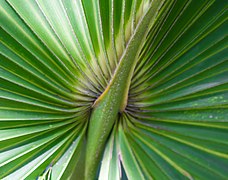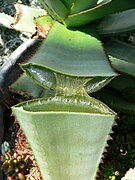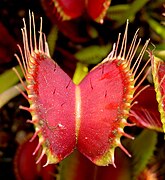Homology (biology)
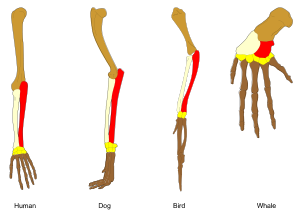
In
In
Homology remains controversial in
History
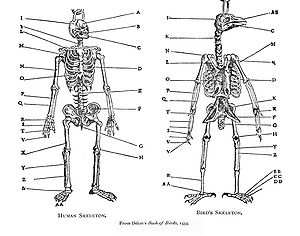
Homology was noticed by
Definition
The word homology, coined in about 1656, is derived from the Greek ὁμόλογος homologos from ὁμός homos 'same' and λόγος logos 'relation'.[8][9][a]
Similar biological structures or sequences in different
Similarly, the forelimbs of ancestral
Homology vs. analogy
The opposite of homologous organs are analogous organs which do similar jobs in two taxa that were not
In cladistics
Specialised terms are used in taxonomic research. Primary homology is a researcher's initial hypothesis based on similar structure or anatomical connections, suggesting that a character state in two or more taxa share is shared due to common ancestry. Primary homology may be conceptually broken down further: we may consider all of the states of the same character as "homologous" parts of a single, unspecified, transformation series. This has been referred to as topographical correspondence. For example, in an aligned DNA sequence matrix, all of the A, G, C, T or implied gaps at a given nucleotide site are homologous in this way. Character state identity is the hypothesis that the particular condition in two or more taxa is "the same" as far as our character coding scheme is concerned. Thus, two Adenines at the same aligned nucleotide site are hypothesized to be homologous unless that hypothesis is subsequently contradicted by other evidence. Secondary homology is implied by
Shared ancestral character states, symplesiomorphies, represent either synapomorphies of a more inclusive group, or complementary states (often absences) that unite no natural group of organisms. For example, the presence of wings is a synapomorphy for pterygote insects, but a symplesiomorphy for holometabolous insects. Absence of wings in non-pterygote insects and other organisms is a complementary symplesiomorphy that unites no group (for example, absence of wings provides no evidence of common ancestry of silverfish, spiders and annelid worms). On the other hand, absence (or secondary loss) of wings is a synapomorphy for fleas. Patterns such as these lead many cladists to consider the concept of homology and the concept of synapomorphy to be equivalent.[25][24] Some cladists follow the pre-cladistic definition of homology of Haas and Simpson,[26] and view both synapomorphies and symplesiomorphies as homologous character states.[27]
In different taxa
Homologies provide the fundamental basis for all biological classification, although some may be highly counter-intuitive. For example,
In arthropods
The embryonic body segments (somites) of different arthropod taxa have diverged from a simple body plan with many similar appendages which are serially homologous, into a variety of body plans with fewer segments equipped with specialised appendages.[30] The homologies between these have been discovered by comparing genes in evolutionary developmental biology.[28]
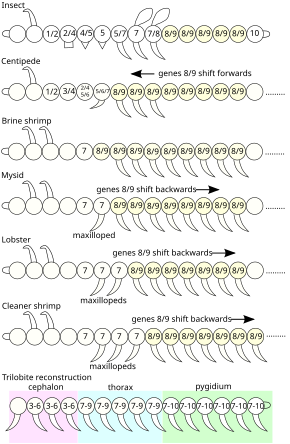
| Somite (body segment) |
Spider (Chelicerata) 
|
Centipede (Myriapoda) |
Insect (Hexapoda) 
|
||
|---|---|---|---|---|---|
| 1 | antennae | chelicerae (jaws and fangs) | antennae | antennae | 1st antennae |
| 2 | 1st legs | pedipalps
|
- | - | 2nd antennae |
| 3 | 2nd legs | 1st legs | mandibles | mandibles | mandibles (jaws) |
| 4 | 3rd legs | 2nd legs | 1st maxillae | 1st maxillae | 1st maxillae |
| 5 | 4th legs | 3rd legs | 2nd maxillae | 2nd maxillae | 2nd maxillae |
| 6 | 5th legs | 4th legs | collum (no legs) | 1st legs | 1st legs |
| 7 | 6th legs | - | 1st legs | 2nd legs | 2nd legs |
| 8 | 7th legs | - | 2nd legs | 3rd legs | 3rd legs |
| 9 | 8th legs | - | 3rd legs | - | 4th legs |
| 10 | 9th legs | - | 4th legs | - | 5th legs |
Among insects, the stinger of the female honey bee is a modified ovipositor, homologous with ovipositors in other insects such as the Orthoptera, Hemiptera, and those Hymenoptera without stingers.[31]
In mammals
The three small bones in the middle ear of mammals including humans, the malleus, incus, and stapes, are today used to transmit sound from the eardrum to the inner ear. The malleus and incus develop in the embryo from structures that form jaw bones (the quadrate and the articular) in lizards, and in fossils of lizard-like ancestors of mammals. Both lines of evidence show that these bones are homologous, sharing a common ancestor.[32]
Among the many homologies in mammal reproductive systems, ovaries and testicles are homologous.[33]
Rudimentary organs such as the human tailbone, now much reduced from their functional state, are readily understood as signs of evolution, the explanation being that they were cut down by natural selection from functioning organs when their functions were no longer needed, but make no sense at all if species are considered to be fixed. The tailbone is homologous to the tails of other primates.[34]
In plants
Leaves, stems, and roots
In many plants, defensive or storage structures are made by modifications of the development of primary
| Primary organs | Defensive structures | Storage structures |
|---|---|---|
| Leaves | Spines | Swollen leaves (e.g. succulents )
|
| Stems | Thorns | Tubers (e.g. potato), rhizomes (e.g. ginger), fleshy stems (e.g. cacti) |
| Roots | - | Root tubers (e.g. sweet potato), taproot (e.g. carrot) |
Certain
-
OneEuropean ash
-
Detail ofpalmleaf
-
The very large leaves of the banana, Musa acuminata
-
Insect-trapping leaf of Venus flytrap
-
Insect-trapping leaf of pitcher plant
Flower parts
The four types of flower parts, namely
Developmental biology
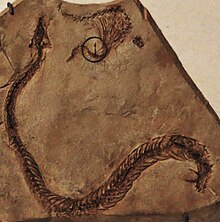
Sequence homology
As with anatomical structures,
Homologous sequences are orthologous if they are descended from the same ancestral sequence separated by a speciation event: when a species diverges into two separate species, the copies of a single gene in the two resulting species are said to be orthologous. The term "ortholog" was coined in 1970 by the molecular evolutionist Walter Fitch.[41]
Homologous sequences are paralogous if they were created by a duplication event within the genome. For gene duplication events, if a gene in an organism is duplicated, the two copies are paralogous. They can shape the structure of whole genomes and thus explain genome evolution to a large extent. Examples include the Homeobox (Hox) genes in animals. These genes not only underwent gene duplications within chromosomes but also whole genome duplications. As a result, Hox genes in most vertebrates are spread across multiple chromosomes: the HoxA–D clusters are the best studied.[42]
Some sequences are homologous, but they have diverged so much that their sequence similarity is not sufficient to establish homology. However, many proteins have retained very similar structures, and structural alignment can be used to demonstrate their homology.[43]
In behaviour
It has been suggested that some
As with morphological features or DNA, shared similarity in behavior provides evidence for common ancestry.[46] The hypothesis that a behavioral character is not homologous should be based on an incongruent distribution of that character with respect to other features that are presumed to reflect the true pattern of relationships. This is an application of Willi Hennig's[47] auxiliary principle.
Notes
- ^ If the two pairs of wings are considered as interchangeable, homologous structures, this may be described as a parallel reduction in the number of wings, but otherwise the two changes are each divergent changes in one pair of wings.
- ^ These are coloured in the lead image: humerus brown, radius pale buff, ulna red.
References
- ^ PMID 10332750.
- ^ )
- ^ a b c d Brigandt, Ingo (23 November 2011). "Essay: Homology". The Embryo Project Encyclopedia.
- ^ .
- ^ Geoffroy Saint-Hilaire, Etienne (1818). Philosophie anatomique. Vol. 1: Des organes respiratoires sous le rapport de la détermination et de l'identité de leurs piecès osseuses. Vol. 1. Paris: J. B. Baillière.
- ^ Owen, Richard (1843). Lectures on the Comparative Anatomy and Physiology of the Invertebrate Animals, Delivered at the Royal College of Surgeons in 1843. Longman, Brown, Green, and Longmans. pp. 374, 379.
- PMID 18536034.
- ^ Bower, Frederick Orpen (1906). "Plant Morphology". Congress of Arts and Science: Universal Exposition, St. Louis, 1904. Houghton, Mifflin. p. 64.
- ISBN 978-0-415-28032-7.
- ^ "homogeneous, adj.". OED Online. March 2016. Oxford University Press. http://www.oed.com/view/Entry/88045? (accessed April 09, 2016).
- ^ "homogenous, adj.". OED Online. March 2016. Oxford University Press. http://www.oed.com/view/Entry/88055? (accessed April 09, 2016).
- ISBN 978-1-4008-5146-1.
elytra have very little similarity with typical wings, but are clearly homologous to forewings. Hence butterflies, flies, and beetles all have two pairs of dorsal appendages that are homologous among species.
- ISBN 978-1-4419-8981-9.
For example, wing and haltere are homologous, yet widely divergent, organs that normally arise as dorsal appendages of the second thoracic (T2) and third thoracic (T3) segments, respectively.
- ^ "Homology: Legs and Limbs". UC Berkeley. Retrieved 15 December 2016.
- ^ "Secret Found to Flight of 'Helicopter Seeds'". LiveScience. 11 June 2009. Retrieved 2 March 2017.
- S2CID 12216605.
- S2CID 205469918.
- ^ Cf. Butler, A. B.: Homology and Homoplasty. In: Squire, Larry R. (Ed.): Encyclopedia of Neuroscience, Academic Press, 2009, pp. 1195–1199.
- ^ "Homologous structure vs. analogous structure: What is the difference?". Retrieved 27 September 2016.
- S2CID 3551391.
- S2CID 85385271.
- ISBN 978-1-4443-1336-9.
- S2CID 86806203.
- ^ S2CID 221550586.
- ^ Patterson, C. (1982). "Morphological characters and homology". In K. A. Joysey; A. E. Friday (eds.). Problems of Phylogenetic Reconstruction. London and New York: Academic Press. pp. 21–74.
- ^ Haas, O. and G. G. Simpson. 1946. Analysis of some phylogenetic terms, with attempts at redefinition. Proc. Amer. Phil. Soc. 90:319-349.
- S2CID 221582887.
- ^ a b Brusca, R. C.; Brusca, G. J. (1990). Invertebrates. Sinauer Associates. p. 669.
- ISBN 978-0-297-85094-6.
- ISBN 978-0-470-51566-2.
- .
- ^ "Homology: From jaws to ears — an unusual example of a homology". UC Berkeley. Retrieved 15 December 2016.
- ISBN 978-0-07-338282-1.
- ISBN 978-0-679-64288-6.
- ^ "Homology: Leave it to the plants". University of California at Berkeley. Retrieved 7 May 2017.
- JSTOR 2418787.
- ISBN 978-0-12-319583-8.
- ^ "Homologies: developmental biology". UC Berkeley. Retrieved 15 December 2016.
- ^ "Clustal FAQ #Symbols". Clustal. Archived from the original on 24 October 2016. Retrieved 8 December 2014.
- PMID 16285863.
- PMID 5449325.
- PMID 17644373.
- PMID 36419248.
- PMID 22711075.
- ISBN 978-1-135-83123-3.)
Finally, much recent information on children's and nonhuman primates' behavior in groups, a conjunction of hard human data and hard nonhuman primate data, lends credence to our comparison. Our conclusion is that, based on their agreement in several unusual characteristics, dominance patterns are homologous in primates. This agreement of unusual characteristics is found at several levels, including fine motor movement, gross motor movement, and behavior at the group level.
{{cite book}}:|work=ignored (help - ^ Wenzel, John W. 1992. Behavioral homology and phylogeny. Annual Review of Ecology and Systematics 23:361-381
- ^ Hennig, W. 1966. Phylogenetic Systematics. University of Illinois Press
Further reading
- Brigandt, Ingo (2011) "Essay: Homology." In: The Embryo Project Encyclopedia.
- ISBN 978-0-297-85094-6.
- ISBN 978-0-393-06163-5.
- DePinna, M.C. (1991). "Concepts and tests of homology in the cladistic paradigm". Cladistics. 7 (4): 367–94. S2CID 3551391.
- Dewey, C.N.; PMID 16651369.
- Fitch, W.M. (May 2000). "Homology a personal view on some of the problems". Trends in Genetics. 16 (5): 227–31. PMID 10782117.
- Gegenbaur, G. (1898). Vergleichende Anatomie der Wirbelthiere ... Leipzig.
{{cite book}}: CS1 maint: location missing publisher (link) - Haeckel, Еrnst (1866). Generelle Morphologie der Organismen. Bd 1-2. Вerlin.
{{cite book}}: CS1 maint: location (link) CS1 maint: location missing publisher (link) - Kuzniar, A.; van Ham, R.C.; Pongor, S.; Leunissen, J.A. (November 2008). "The quest for orthologs: finding the corresponding gene across genomes". Trends Genet. 24 (11): 539–551. PMID 18819722.
- Mindell, D.P.; Meyer, A. (2001). "Homology evolving" (PDF). Trends in Ecology and Evolution. 16 (8): 434–40. doi:10.1016/S0169-5347(01)02206-6. Archived from the original(PDF) on 27 June 2010.
- Owen, Richard (1847). On the archetype and homologies of the vertebrate skeleton. London: John van Voorst, Paternoster Row.
External links
 Media related to Homology at Wikimedia Commons
Media related to Homology at Wikimedia Commons




